Blog
Raymond Mantilla (June 22, 1934 – March 21, 2020) was an American percussionist.
- Mantilla (Inner City, 1978)
- Hands of Fire (Red, 1984)
- Synergy (Red, 1986)
- Dark Powers (Red, 1988)
- The Next Step (Red, 2000)
- Man-Ti-Ya (Savant, 2004)
- Good Vibrations (Savant, 2006)
- The Connection (Savant, 2013)
- High Voltage (Savant, 2017)
- Rebirth (Savant, 2021).
KARIBUNI performing Wednesday June 21st 130-230pm at Cerenity Humboldt. This version of the East African ensemble with Shalita, MP Mpambara Gubare, Edna Idelle and mick laBriola. A Celebration concluding the RHYTHM ROOTS WORKSHOP ending on 6-14-23
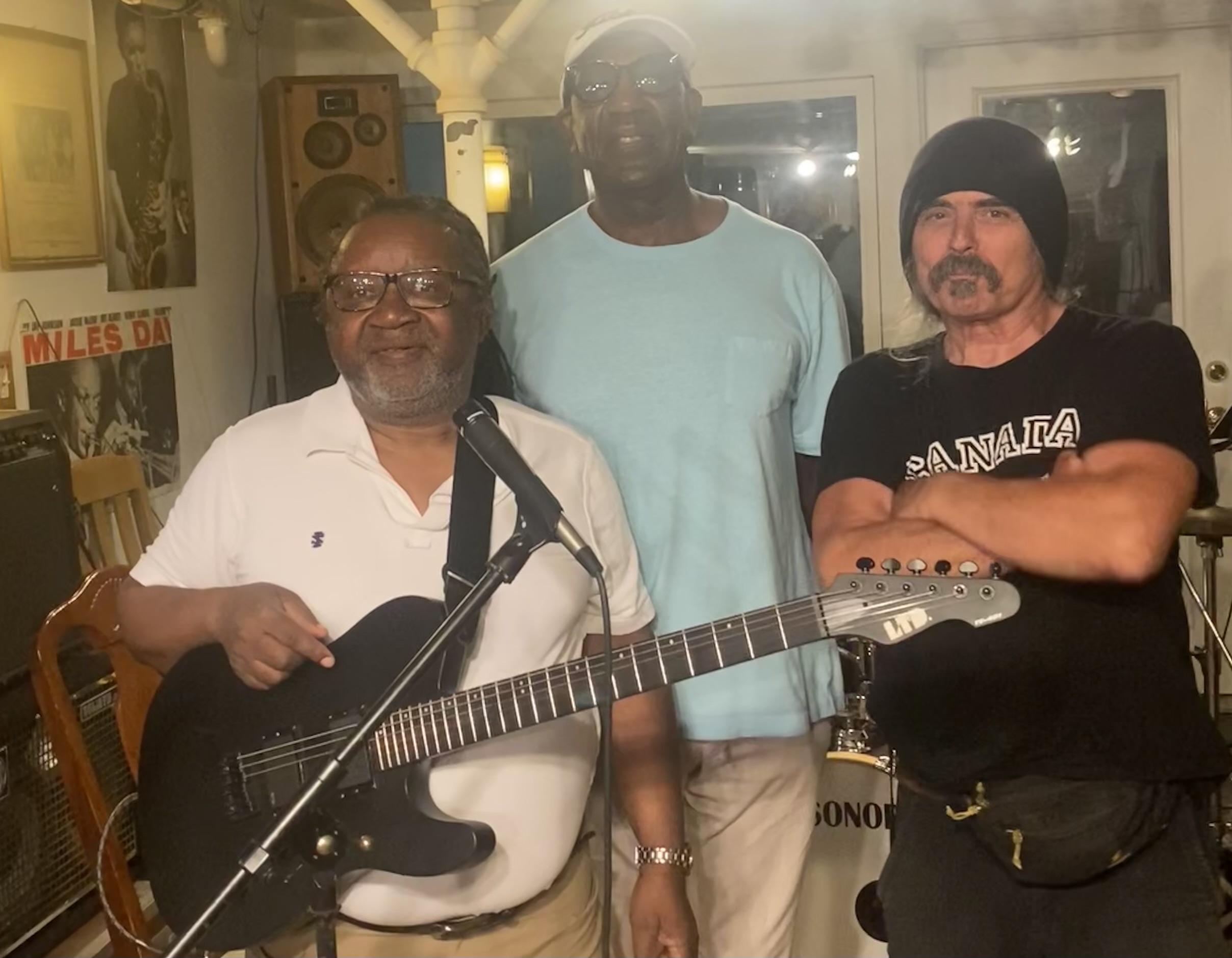
The Elephant’s Trunk Nebula is a concentration of interstellar gas and dust within the ionized gas region IC 1396, located in the constellation Cepheus about 2400 light-years from Earth. The part of the nebula shown in my photo is the dark dense globule vdB 142, commonly referred to as the Elephant’s Trunk nebula due to its appearance at visible light wavelengths, where there is a dark spot with a bright, sinuous edge . The bright edge is the surface of the dense cloud that is illuminated and ionized by a very bright and massive star (HD 206267) located just east of vdB 142.
The Elephant’s Trunk Nebula is thought to be a site of star formation, containing several very young stars (less than 100,000 years old) that were discovered in infrared images from 2003. Two older stars are present in a small circular cavity in the head of the globule. The winds from these young stars may have emptied the cavity.
The combined action of the light from the massive star ionizing and compressing the edge of the cloud and the wind from the young stars moving the gas outward from the center lead to a very high compression in the Elephant’s Trunk Nebula. This pressure triggered the current generation of protostars.
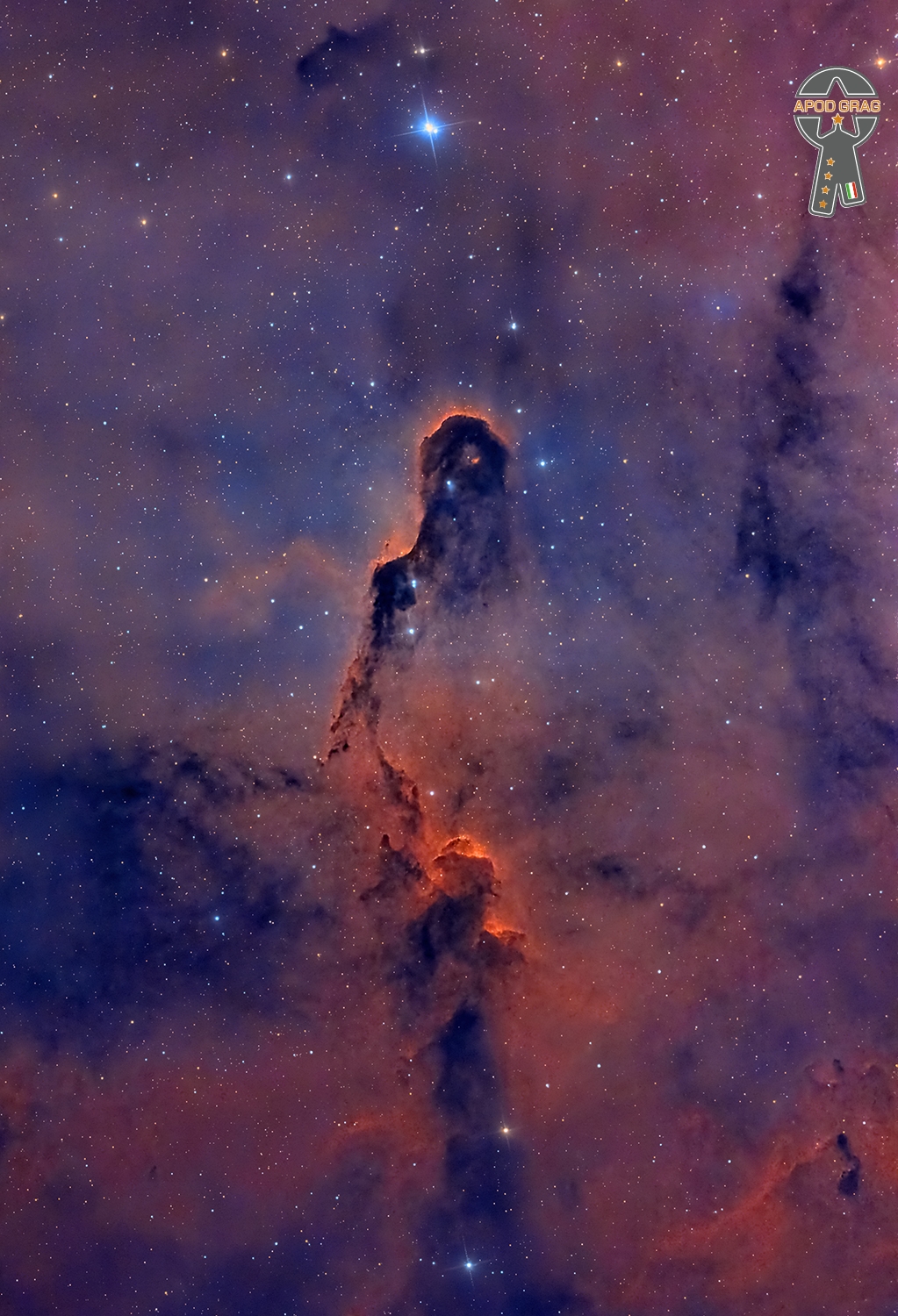
Nils Hilmer Lofgren (born June 21, 1951) is an American rock musician, recording artist, songwriter, and multi-instrumentalist. Along with his work as a solo artist, he has been a member of Bruce Springsteen‘s E Street Band since 1984, a member of Crazy Horse, and founder/frontman of the band Grin. Lofgren was inducted into the Rock and Roll Hall of Fame as a member of the E Street Band in 2014.
Lofgren was born in Chicago, Illinois, United States, to an Italian mother and a Swedish father. When he was a young child, the family moved to the Washington, D.C., suburb of Bethesda, Maryland. Lofgren’s first instrument was classical accordion, beginning at age five, which he studied seriously for ten years. After studying classical music and jazz, throughout his youth, Lofgren switched his emphasis to rock music, and focused on the piano and the guitar.
more...Boris Claudio “Lalo” Schifrin (born June 21, 1932) is an Argentine pianist, composer, arranger, and conductor. He is best known for his large body of film and TV scores since the 1950s, incorporating jazz and Latin American musical elements alongside traditional orchestrations. He is a five-time Grammy Awardwinner; he has been nominated for six Academy Awards and four Emmy Awards.
Schifrin’s best known compositions include the “Theme from Mission: Impossible“, as well as the scores to Cool Hand Luke (1967), Bullitt (1968), THX 1138 (1971), Enter the Dragon (1973), The Four Musketeers(1974), Voyage of the Damned (1976), The Amityville Horror (1979), and the Rush Hour trilogy (1998–2007). Schifrin is also noted for his collaborations with Clint Eastwood from the late 1960s to the 1980s, particularly the Dirty Harry series of films. He composed the Paramount Pictures fanfare used from 1976 to 2004.
In 2019, he received an honorary Oscar “in recognition of his unique musical style, compositional integrity and influential contributions to the art of film scoring.” Schifrin was born in Buenos Aires to a Jewish family. His father, Luis Schifrin, led the second violin section of the orchestra at the Teatro Colón for three decades.
more...Nehemiah Curtis “Skip” James (June 9, 1902 – October 3, 1969) was an American Delta blues singer, guitarist, pianist and songwriter. AllMusic stated: “This emotional, lyrical performer was a talented blues guitarist and arranger with an impressive body of work.”
His guitar playing is noted for its dark, minor-key sound, played in an open D-minor tuning with an intricate fingerpicking technique. James first recorded for Paramount Records in 1931, but these recordings sold poorly, having been released during the Great Depression, and he drifted into obscurity.
After a long absence from the public eye, James was rediscovered in 1964 by blues enthusiasts including John Fahey, helping further the blues and folk music revival of the 1950s and early 1960s. During this period, James appeared at folk and blues festivals, gave concerts around the country, and recorded several albums for various record labels. His songs have influenced generations of musicians and have been adapted by numerous artists. He has been hailed as “one of the seminal figures of the blues”.
Nehemiah Curtis James was born on June 9, 1902, in a segregated hospital near Bentonia, Mississippi.His mother Phyllis worked as a cook and babysitter on the Woodbine Plantation, which was 15 miles south of Yazoo City, and his father Eddie James was a bootlegger, described as a “local lowlife” by Stephen Calt, who left the family around 1907.
more...First Avenue with Martin Ubwe, Mpambara Gubare, Dave Burk & mick laBriola
more...Among the most fundamental questions in astronomy is: How did the first stars and galaxies form? NASA’s James Webb Space Telescope is already providing new insights into this question. One of the largest programs in Webb’s first year of science is the JWST Advanced Deep Extragalactic Survey, or JADES, which will devote about 32 days of telescope time to uncover and characterize faint, distant galaxies. While the data is still coming in, JADES already has discovered hundreds of galaxies that existed when the universe was less than 600 million years old. The team also has identified galaxies sparkling with a multitude of young, hot stars. “With JADES, we want to answer a lot of questions, like: How did the earliest galaxies assemble themselves? How fast did they form stars? Why do some galaxies stop forming stars?” said Marcia Rieke of the University of Arizona in Tucson, co-lead of the JADES program.
Star Factories Ryan Endsley of the University of Texas at Austin led an investigation into galaxies that existed 500 to 850 million years after the big bang. This was a crucial time known as the Epoch of Reionization. For hundreds of millions of years after the big bang, the universe was filled with a gaseous fog that made it opaque to energetic light. By one billion years after the big bang, the fog had cleared and the universe became transparent, a process known as reionization. Scientists have debated whether active, supermassive black holes or galaxies full of hot, young stars were the primary cause of reionization.
As part of the JADES program, Endsley and his colleagues studied these galaxies with Webb’s NIRSpec (Near-Infrared Spectrograph) instrument to look for signatures of star formation – and found them in abundance. “Almost every single galaxy that we are finding shows these unusually strong emission linesignatures indicating intense recent star formation. These early galaxies were very good at creating hot, massive stars,” said Endsley.
These bright, massive stars pumped out torrents of ultraviolet light, which transformed surrounding gas from opaque to transparent by ionizing the atoms, removing electrons from their nuclei. Since these early galaxies had such a large population of hot, massive stars, they may have been the main driver of the reionization process. The later reuniting of the electrons and nuclei produces the distinctively strong emission lines.
Endsley and his colleagues also found evidence that these young galaxies underwent periods of rapid star formation interspersed with quiet periods where fewer stars formed. These fits and starts may have occurred as galaxies captured clumps of the gaseous raw materials needed to form stars. Alternatively, since massive stars quickly explode, they may have injected energy into the surrounding environment periodically, preventing gas from condensing to form new stars.
The Early Universe Revealed
Another element of the JADES program involves the search for the earliest galaxies that existed when the universe was less than 400 million years old. By studying these galaxies, astronomers can explore how star formation in the early years after the big bang was different from what is seen in current times. The light from faraway galaxies is stretched to longer wavelengths and redder colors by the expansion of the universe – a phenomenon called redshift. By measuring a galaxy’s redshift, astronomers can learn how far away it is and, therefore, when it existed in the early universe. Before Webb, there were only a few dozen galaxies observed above a redshift of 8, when the universe was younger than 650 million years old, but JADES has now uncovered nearly a thousand of these extremely distant galaxies.
The gold standard for determining redshift involves looking at a galaxy’s spectrum, which measures its brightness at a myriad of closely spaced wavelengths. But a good approximation can be determined by taking photos of a galaxy using filters that each cover a narrow band of colors to get a handful of brightness measurements. In this way, researchers can determine estimates for the distances of many thousands of galaxies at once.
Kevin Hainline of the University of Arizona in Tucson and his colleagues used Webb’s NIRCam (Near-Infrared Camera) instrument to obtain these measurements, called photometric redshifts, and identified more than 700 candidate galaxies that existed when the universe was between 370 million and 650 million years old. The sheer number of these galaxies was far beyond predictions from observations made before Webb’s launch. The observatory’s exquisite resolution and sensitivity are allowing astronomers to get a better view of these distant galaxies than ever before.
“Previously, the earliest galaxies we could see just looked like little smudges. And yet those smudges represent millions or even billions of stars at the beginning of the universe,” said Hainline. “Now, we can see that some of them are actually extended objects with visible structure. We can see groupings of stars being born only a few hundred million years after the beginning of time.” “We’re finding star formation in the early universe is much more complicated than we thought,” added Rieke. These results are being reported at the 242nd meeting of the American Astronomical Society in Albuquerque, New Mexico.
The James Webb Space Telescope is the world’s premier space science observatory. Webb will solve mysteries in our solar system, look beyond to distant worlds around other stars, and probe the mysterious structures and origins of our universe and our place in it. Webb is an international program led by NASA with its partners, ESA (European Space Agency) and the Canadian Space Agency.
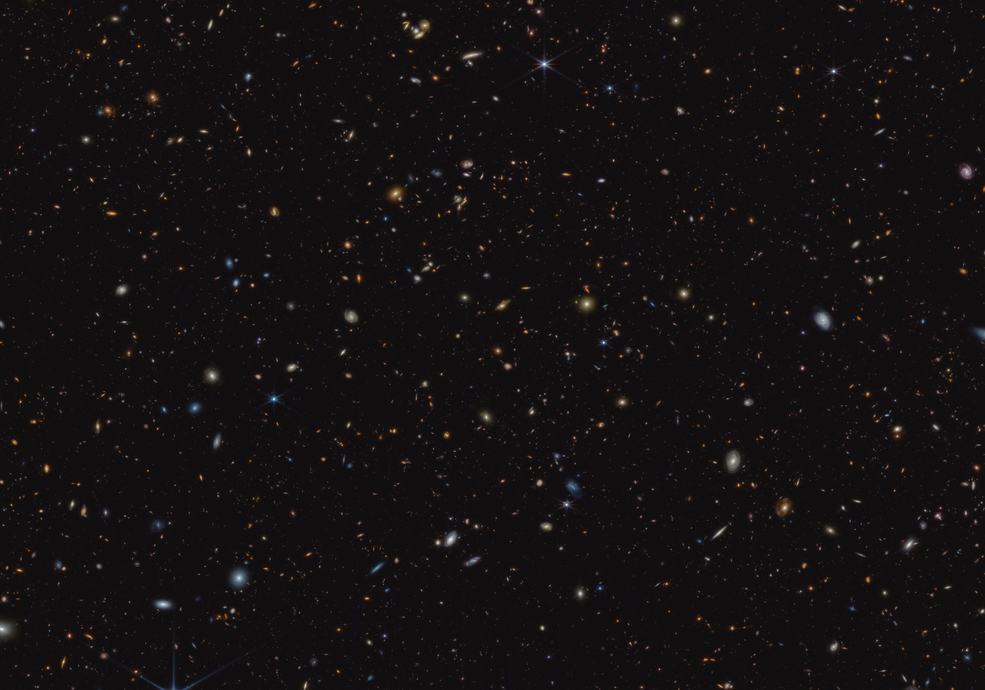
Brian Douglas Wilson (born June 20, 1942 Inglewood, CA) is an American musician, singer, songwriter, and record producer who co-founded the Beach Boys. Often called a genius for his novel approaches to popcomposition, extraordinary musical aptitude, and mastery of recording techniques, he is widely acknowledged as one of the most innovative and significant songwriters of the 20th century. His best-known work is distinguished for its high production values, complex harmonies and orchestrations, layered vocals, and introspective or ingenuous themes. Wilson is also known for his formerly high-ranged singing and for his lifelong struggles with mental illness.
Raised in Hawthorne, California, Wilson’s formative influences included George Gershwin, the Four Freshmen, Phil Spector, and Burt Bacharach. In 1961, he began his professional career as a member of the Beach Boys, serving as the band’s songwriter, producer, co-lead vocalist, bassist, keyboardist, and de factoleader. After signing with Capitol Records in 1962, he became the first pop artist credited for writing, arranging, producing, and performing his own material. He also produced other acts, most notably the Honeys and American Spring. By the mid-1960s he had written or co-written more than two dozen U.S. Top 40 hits, including the number-ones “Surf City” (1963), “I Get Around” (1964), “Help Me, Rhonda” (1965), and “Good Vibrations” (1966). He is considered among the first music producer auteurs and the first rock producers to apply the studio as an instrument.
In 1964, Wilson had a nervous breakdown and resigned from regular concert touring, which led to more refined work, such as the Beach Boys’ Pet Sounds and his first credited solo release, “Caroline, No” (both 1966), as well as the unfinished album Smile. As he declined professionally and psychologically in the late 1960s, his contributions to the band diminished, and legends grew around his lifestyle of seclusion, overeating, and drug abuse. His first comeback, divisive among fans, yielded the would-be solo effort The Beach Boys Love You (1977). In the 1980s he formed a controversial creative and business partnership with his psychologist, Eugene Landy, and relaunched his solo career with the album Brian Wilson (1988). Wilson disassociated from Landy in 1991 and went on to tour regularly as a solo artist from 1999 to 2022.
Heralding popular music’s recognition as an art form, Wilson’s accomplishments as a producer helped initiate an era of unprecedented creative autonomy for label-signed acts. The youth culture of the 1960s is commonly associated with his early songs, and he is regarded as an important figure to many music genres and movements, including the California sound, art pop, psychedelia, chamber pop, progressive music, punk, outsider, and sunshine pop. Since the 1980s, his influence has extended to styles such as post-punk, indie rock, emo, dream pop, Shibuya-kei, and chillwave. Wilson’s accolades include numerous industry awards, inductions into multiple music halls of fame, and entries on several “greatest of all time” critics’ rankings. His life was dramatized in the 2014 biopic Love & Mercy.
more...Chester Burton Atkins (June 20, 1924 – June 30, 2001), known also as “Mr. Guitar” and “The Country Gentleman“, was an American musician who, along with Owen Bradley and Bob Ferguson, helped create the Nashville sound, the country music style which expanded its appeal to adult pop music fans. He was primarily a guitarist, but he also played the mandolin, fiddle, banjo, and ukulele, and occasionally sang.
Atkins’s signature picking style was inspired by Merle Travis. Other major guitar influences were Django Reinhardt, George Barnes, Les Paul, and, later, Jerry Reed. His distinctive picking style and musicianship brought him admirers inside and outside the country scene, both in the United States and abroad. Atkins spent most of his career at RCA Victor and produced records for the Browns, Hank Snow, Porter Wagoner, Norma Jean, Dolly Parton, Dottie West, Perry Como, Floyd Cramer, Elvis Presley, the Everly Brothers, Eddy Arnold, Don Gibson, Jim Reeves, Jerry Reed, Skeeter Davis, Waylon Jennings, Roger Whittaker, Ann-Margret and many others.
Rolling Stone credited Atkins with inventing the “popwise ‘Nashville sound’ that rescued country music from a commercial slump” and ranked him number 21 on their list of “The 100 Greatest Guitarists of All Time”.Among many other honors, Atkins received 14 Grammy Awards and the Grammy Lifetime Achievement Award. He also received nine Country Music Association awards for Instrumentalist of the Year. He was inducted into the Rock & Roll Hall of Fame, the Country Music Hall of Fame and Museum, and the Musicians Hall of Fame and Museum. George Harrison was also inspired by Chet Atkins; early Beatles songs such as “All My Loving” show the influence.
Atkins was born on June 20, 1924, in Luttrell, Tennessee, near Clinch Mountain. His parents divorced when he was six years old, after which he was raised by his mother. He was the youngest of three boys and a girl. He started out on the ukulele, later moving on to the fiddle, but he made a swap with his brother Lowell when he was nine: an old pistol and some chores for a guitar.
more...
Eric Allan Dolphy Jr. (June 20, 1928 – June 29, 1964) was an American jazz alto saxophonist, bass clarinetist and flautist. On a few occasions, he also played the clarinet and piccolo. Dolphy was one of several multi-instrumentalists to gain prominence in the same era. His use of the bass clarinet helped to establish the instrument within jazz. Dolphy extended the vocabulary and boundaries of the alto saxophone, and was among the earliest significant jazz flute soloists.
His improvisational style was characterized by the use of wide intervals, in addition to employing an array of extended techniques to emulate the sounds of human voices and animals. He used melodic lines that were “angular, zigzagging from interval to interval, taking hairpin turns at unexpected junctures, making dramatic leaps from the lower to the upper register.” Although Dolphy’s work is sometimes classified as free jazz, his compositions and solos were often rooted in conventional (if highly abstracted) tonal bebopharmony.
Dolphy was born and raised in Los Angeles, California. His parents were Sadie and Eric Dolphy, Sr.,who immigrated to the United States from Panama. He began music lessons at age six, studying clarinet and saxophone privately. While still in junior high, he began to study the oboe, aspiring to a professional symphonic career, and received a two-year scholarship to study at the music school of the University of Southern California.
more...Producer Ian Brenan reported the passing of Yanna Momina, a leading artist from the northeast African nation of Jibuti (Djibouti), on Sunday, June 18th. Brenan said: “Yanna Momina Abass 1947-2023. We are saddened to announce the death of Yanna Momina at age 76. Momina had been scheduled to perform at this year’s WOMAD Festival, but fell ill in the spring. Her presence will be missed, but her one-of-a-kind voice lives on.”
Yanna Momina was a singer-songwriter and a member of the Afar people, Jibuti’s second-largest ethnic group. She became known locally for her extraordinary talent and powerful vocal delivery. Yanna was discovered while accompanied on a two-string shingle played with nails and a matchbox for maracas. She made a name in the region, presenting her musical traditions on her album “Afar Ways” (Glitterbeat, 2022) which was recorded live in a stilt-hut on the Horn of Africa with American producer Ian Brennan.
more...On “Freedom’s Eve,” or the eve of January 1, 1863, the first Watch Night services took place. On that night, enslaved and free African Americans gathered in churches and private homes all across the country awaiting news that the Emancipation Proclamation had taken effect. At the stroke of midnight, prayers were answered as all enslaved people in Confederate States were declared legally free. Union soldiers, many of whom were black, marched onto plantations and across cities in the south reading small copies of the Emancipation Proclamation spreading the news of freedom in Confederate States. Only through the Thirteenth Amendment did emancipation end slavery throughout the United States.
But not everyone in Confederate territory would immediately be free. Even though the Emancipation Proclamation was made effective in 1863, it could not be implemented in places still under Confederate control. As a result, in the westernmost Confederate state of Texas, enslaved people would not be free until much later. Freedom finally came on June 19, 1865, when some 2,000 Union troops arrived in Galveston Bay, Texas. The army announced that the more than 250,000 enslaved black people in the state, were free by executive decree. This day came to be known as “Juneteenth,” by the newly freed people in Texas.
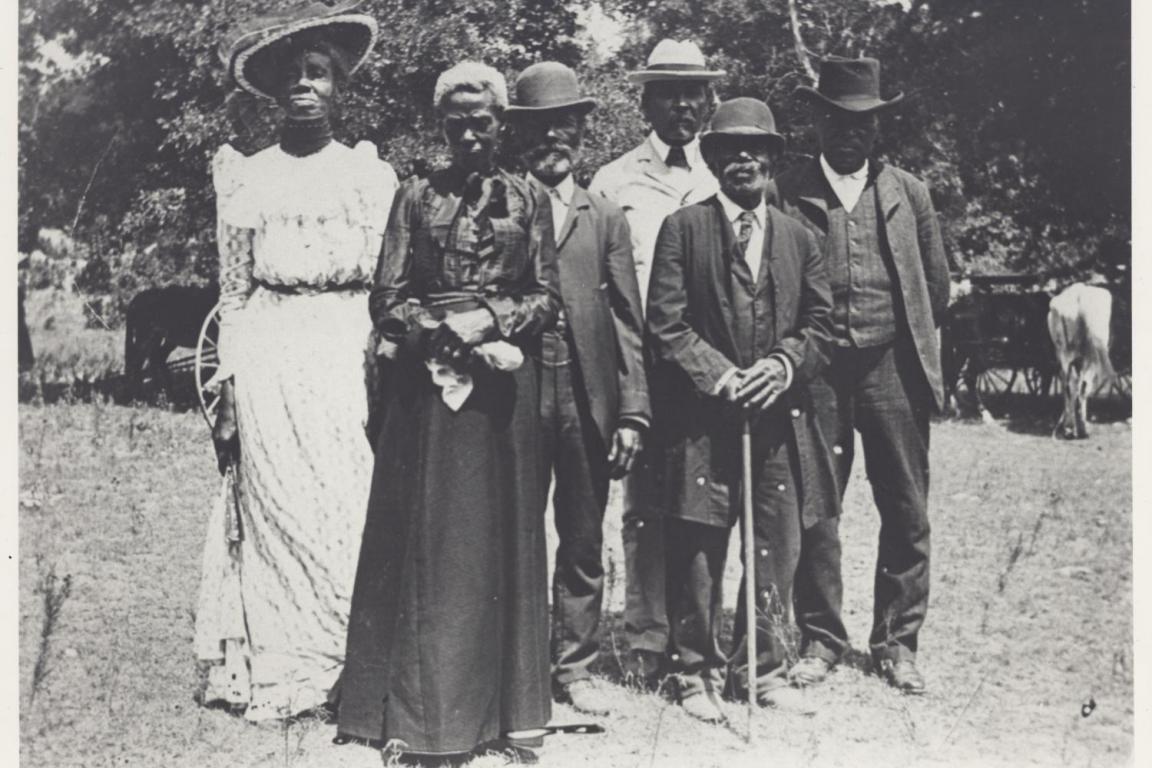
The center of the Lagoon Nebula is a whirlwind of spectacular star formation. Visible near the image center, at least two long funnel-shaped clouds, each roughly half a light-year long, have been formed by extreme stellar winds and intense energetic starlight. A tremendously bright nearby star, Herschel 36, lights the area. Vast walls of dust hide and redden other hot young stars. As energy from these stars pours into the cool dust and gas, large temperature differences in adjoining regions can be created generating shearing winds which may cause the funnels. This picture, spanning about 15 light years, combines images taken in four colors by the orbiting Hubble Space Telescope. The Lagoon Nebula, also known as M8, lies about 5000 light years distant toward the constellation of the Archer (Sagittarius).
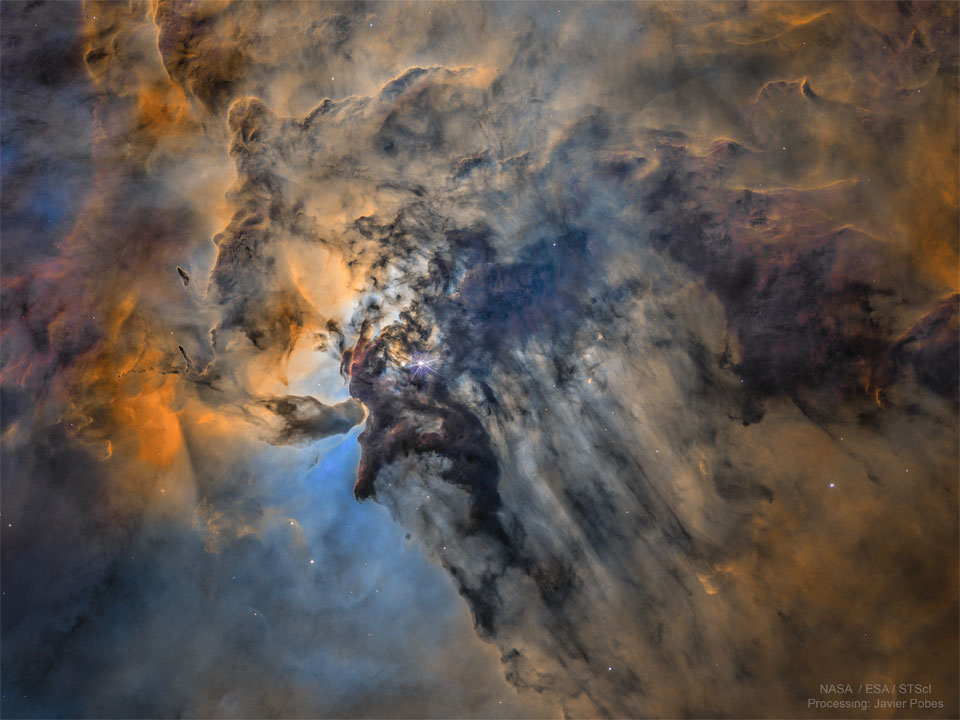
more...
John Stein is a jazz guitarist and teacher from Kansas City, Missouri. Born: 1949 (age 74 years), Kansas City, MO
A native of Kansas City, Missouri, Stein took his first guitar lesson when he was seven and his first jazz lesson when he was thirteen. In 1967, he attended Beloit College, but he dropped out and moved to Vermont. He worked in local clubs playing rock music, then took jazz lessons from a pianist. When he was thirty, he attended the Berklee College of Music and taught there after he graduated. He received a master’s degree in education from Harvard and also plays double bass. His first album, Hustle Up!, was released in 1995.
more...More Posts
- World Music with Andy Palacio
- Daily Roots with Tappa Zukie
- RHYTHM ROOTS WORKSHOP 2-20-18
- The Cosmos with Sh2 155
- Leroy Jones Day
- Charles Kynard Day
- Jimmy Yancey Day
- World Fusion with Noel Quinlan
- Daily Roots with Prince Lincoln
- The Cosmos with NGC 4698
- Ron Mathewson Day
- Smokey Robinson Day
- Johnny Dunn Day
- World Music with Fargana Qasimova
- Daily Roots with U Roy
- The Cosmos with LL Ori
- Al Foster Day
- Harold Land Day
- Frank Butler Day
- World Music with Bari Siddiqui
